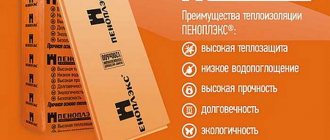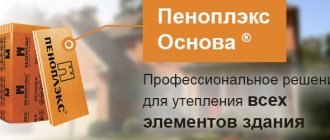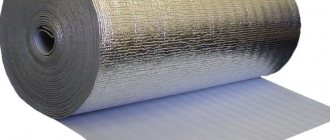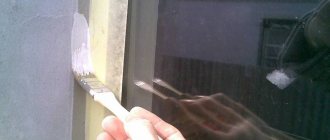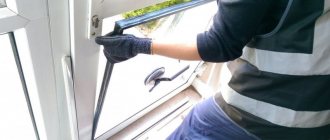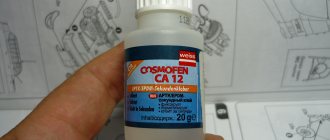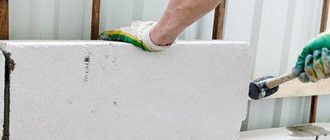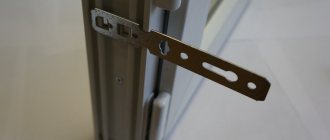Many are afraid to use penoplex, believing that it is unsafe, but this is a controversial statement. The material is only dangerous in case of fire, as it emits harmful substances, but this can also be avoided. Let's learn about the features of this insulation, its advantages and disadvantages, its features and how to use it correctly and where. We will determine whether penoplex indoors is harmful to health, whether it can be used in residential buildings, and whether there are any restrictions.
Appearance Source sps2016.ru
What is it and where is penoplex used?
Penoplex (“Penoplex”) is a large company that produces construction and finishing materials. The company also produces extruded (melted in a high-pressure oven) expanded polystyrene (EPS, XRS) or penoplex. This is a thermal insulation material that has excellent thermal characteristics. A sheet of material just 2 cm thick retains as much heat as a 20 cm thick wooden wall, 27 cm thick foam concrete or 37 cm thick brick wall.
Compared to foamed polystyrene (foam), penoplex has a higher density, so it better withstands mechanical loads. The material has low moisture permeability and almost does not conduct steam.
Penoplex is used when resistance to stress and low vapor permeability are important. It is used:
- For insulation of floors, facades, internal walls, non-residential basements;
- On flat roofs;
- For insulation of wells and septic tanks;
- On paths and playgrounds.
Using penoplex Source prom.st
The company produces several brands of material that differ in properties. For example, for insulation of foundations and underground garages, frost-resistant “Penoplex Comfort” or “Foundation” is used (it can withstand heavy loads), for insulation of balconies and external walls - “Wall” with low thermal conductivity, for roofs - non-flammable “Roof”.
At the same time, it is important to establish a ventilation system, which, like penoplex, does not allow steam to pass through. In the home, this can lead to increased humidity and the need for artificial regulation. However, this is not always necessary: for example, when insulating the floor, ventilation is not needed.
See also: Catalog of companies that specialize in finishing materials and related work
Building codes
Certification documents are issued for facade insulation systems in Russia - Technical Certificate of Rosstroy of the Russian Federation. But so far, not a single technical certificate for a facade insulation system with a thin plaster layer specifies penoplex, technoplex or its analogues as the main wall insulation.
That is why you will not find the facade of an administrative building insulated with extrusion, because not a single state inspection organization will approve the insulation project for such a facade (and the insulation of the facades of administrative buildings must be approved), unless it is a “squatter construction”.
Advantages and disadvantages
It is worth finding out whether penoplex is harmful to health. Like any material, it has a number of pros and cons. To understand whether it is harmful to health, it is worth learning a little more about insulation.
The advantages of the material include:
- Long service life: penoplex can be used for up to 50 years;
- Tolerates low (up to -50 degrees) and high (up to +75 degrees) temperatures;
- Does not absorb water, does not require additional waterproofing;
Penoplex close up Source sladkiyson.net
- Does not react with most chemicals. The material is destroyed only upon contact with a solvent;
- Withstands mechanical loads without breaking. On average, penoplex can withstand pressure of up to 4 kg per square centimeter, some brands (for example, “Foundation”) - up to 27 kg. Polystyrene foam can withstand no more than 0.5 kg per square centimeter.
In addition, the material is easy to use. It does not require additional processing or special skills; it can be cut with a knife and glued with glue or special foam.
Penoplex has some disadvantages:
- It is easily destroyed when exposed to direct sunlight. When working with it, it is better to choose a cloudy day and do everything quickly;
- It is easy for mice to breed in it;
- Its cost is higher than that of other insulation materials;
- Penoplex is flammable. It belongs to categories G3 and G4, which include the most flammable materials.
In advertising they often say that the material does not burn and is safer than wood. This is not so: you can determine whether penoplex is harmful by its flammability. The material is highly flammable and emits vapors that are hazardous to health. You can reduce the harm by treating the sheets with fire retardant compounds. This will help reduce flammability to class G1. In the event of a fire, the penoplex will melt and will not be able to support the fire.
Installation work
- The working surface is to be cleaned of traces of soil followed by drying. Laying begins from the corner of the building. To use glue economically, apply four fragments in the corners and one in the middle to the underside of the panels. If there is a tongue-and-groove joint, vertical and horizontal joints are coated with glue.
- Special sealing of interpanel seams is not required, but gluing with construction tape or sealing with moisture-resistant putty will prevent soil from entering the structure during a spontaneous rise in the groundwater level. Foam cladding serves as foundation waterproofing and reliable protection against seasonal movements of heaving soils.
Replacing the soil fill with expanded clay or other similar material will help completely eliminate heaving. It is allowed to use a mixture of soil and expanded clay in a 1:1 ratio.
The next option for insulating the foundation is the arrangement of an insulated blind area that can reduce the depth of maximum freezing of the foundation soil by 40-50%. The depth of the excavation located around the perimeter of the house should be sufficient for laying a sand cushion with a thickness of 50 mm or more. The laid panels serve as the basis for the concrete screed and installation of large-format tile cladding.
Requirements for insulation
Insulation is an important material in construction that can affect the health and safety of occupants. You shouldn't choose based on price alone.
When choosing insulation, it is important to pay attention to the following points:
- The material should not contain fine fibers or dust;
- It should not contain harmful phenol-formaldehyde resins;
- During operation, it does not emit harmful substances even at high temperatures;
- It practically does not get wet, since fungi and mold easily grow in wet material.
According to these criteria, penoplex is absolutely safe. It has the necessary certificates of conformity, has passed all tests and is found safe when used correctly.
Balcony insulation Source remontnik.ru
Strong arguments in favor of PENOPLEX®
Do not forget one very, very important point: you will spend this amount on insulating the base only once during the entire life of the greenhouse, since PENOPLEX is a truly durable material. Biostable (unfavorable for the development of dangerous and harmful microorganisms, fungi and mold), chemically and physically neutral. Eco-friendly (its use in greenhouses is safe) - allows you to grow useful and healthy products, creates favorable natural conditions for them.
And the last, but compelling argument in favor of this method of insulating greenhouses. This is not a dacha initiative of local “Kulibins”, but a proven technology that has long been successfully used by the agricultural leaders of the industry.
Insulation using this technology is also used for industrial greenhouse complexes
How and with what to insulate your greenhouses is up to you. But do not forget that the stingy pays twice: by choosing low-quality materials from an unknown manufacturer, you risk simply throwing money away, leaving greenhouse plants without protection from the cold.
Myths about insulation
Reviews of penoplex are varied, and there are many questions about whether polystyrene foam is harmful as insulation indoors. Some believe that extruded polystyrene foam is harmful and should not be used in the home, others note that the material is completely safe.
The most popular myths include the following:
- Penoplex emits harmful fumes. This is not true: when processing sheets, the material becomes greatly compacted and generally stops releasing vapor into the air. In addition, the sheets are covered on the outside with a finish that will not let harmful substances through, even if they are present.
- The insulation does not allow steam to pass through, which is harmful for residents and the material itself. The walls should not allow moisture or steam to pass through, as the room will become damp. To prevent the insulation itself from getting wet, it is enough to provide good ventilation.
- The presence of penoplex increases the risk of fire. This is a controversial statement. The insulation itself will not catch fire, but during a fire it easily flares up and releases hazardous substances. The sheets must be additionally treated with fire retardant compounds so that they do not burn, but melt.
Forced insulation of a finished wooden floor
A cold floor in a room does not leave a pleasant impression and sometimes you have to insulate it.
To do this you need:
- Remove the baseboards around the perimeter of the room.
- Carefully, without damaging, remove the finishing boards. Number them in order of location, remove the nails.
- Remove the subfloor.
- If necessary, add expanded clay just above the bottom level of the joists, carefully level it and tamp it down.
- Cut penoplex plates according to the distance between the joists and along the length of the room.
- Lay the first layer, seal the joints with tape.
- Lay the second layer in the same way, ensuring that the joints overlap. Tape the joints.
- Restore the subfloor.
- Lay the finishing coating, installing the boards according to the numbering in reverse order.
- Nail the baseboards.
In this case, we recommend using plates with a minimum thickness of 20 mm in two layers. This is enough to successfully resolve the issue.
Useful article? Add to your bookmarks!
THIS MAY BE INTERESTING MORE FROM THE AUTHOR
Floor insulation
Choosing floor coverings for water heated floors
Floor insulation
Izolon: features, types and common areas of application of the material
Floor insulation
Floor insulation with expanded clay
Floor insulation
Installation of heated floors - instructions
Floor insulation
Warm floor under tiles - selection, installation
Floor insulation
Electric heated floors
Video description
You can learn about the fire hazard of penoplex from the video:
- There are a lot of negative reviews from those who are already using the material. There are few negative reviews; they are in no way directly related to harmful effects. There are much more positive reviews: buyers note that they were not disappointed in the penoplex and did not notice any shortcomings.
Thus, it is not difficult to decide whether polystyrene foam as indoor insulation is harmful to health.
It is important to remember that only products from well-known manufacturers are safe. It has passed the appropriate tests and can be used in residential buildings. It is also important to remember that the technical characteristics of penoplex are maintained only with proper installation and operation. Although there are very few situations in which these conditions can be violated.
Preparing the sheathing - step-by-step installation
To make the lathing, you need to decide on the material from which it will be made:
- aluminum;
- tree.
Wood is more environmentally friendly, but more complex in terms of installation. The aluminum frame is much more convenient and practical. Let's move on directly to installing the sheathing:
- The first step is to clean and prepare the surface for future lathing.
- At the second stage, you will need certain tools to attach the frame to the prepared wall.
- The third step is to mark the entire surface where the sheathing frame will be installed.
- After all the preparatory work, you can begin installing the sheathing elements according to the marked marks.
Preparing the sheathing
Briefly about the main thing
Penoplex is a new material for insulation. Its main differences are strength, durability, resistance to various temperatures and exposure to water.
The main disadvantages of insulation are its high price, the likelihood of mice appearing inside it, and high flammability. Penoplex belongs to the flammability groups G3 and G4.
Despite the large number of myths, penoplex is safe and does not harm humans in any way during operation. Only products from well-known manufacturers that have passed the necessary tests and received certificates are distinguished by high quality.
In case of fire, sheets can release harmful substances. To prevent this from happening, it is necessary to treat them with special solutions.
Insulation of the facade: stages of installing slabs with glue
The process of insulating a façade with penoplex slabs is as follows:
- Surface preparation. Contaminants and the old cladding layer are removed from the working base. If there are mold spots, they are treated separately (disinfected with copper sulfate). If necessary, the surface is leveled and primed.
- Installation. The sheets are glued in rows, from bottom to top, with bandaging (offset) of the seams. The adhesive composition is applied to the foam sheet in two crosswise lines. In an alternative method, if the glue is applied to the work surface, it is done in a continuous layer. Each slab is pressed against the wall, its position is checked by level.
Tips for fastening penoplex boards
1) It is optimal to use 6 dowels per slab. Dowels are optimal for thin slabs. In this case, fasteners can be installed anywhere on the slab, in the corners, in the middle or at the seams. It is considered optimal to install 6 dowels on the slab, at an equidistant distance from each other. In this case, it is customary to retreat 15 cm from the edges.
2) When using mastic, ventilate the room. If you work with mastic while insulating a room, be sure to ensure good ventilation of the room. Mastic contains chemical compounds that can negatively affect your health. Mastic is applied in different ways - in stripes along the entire length of the slab, in a square along the perimeter, or in large dots over the entire area of the insulation.
3) Fixation with glue and umbrella dowels. The most reliable fixation involves an adhesive connection in combination with the installation of umbrella dowels. This type of fastening is recommended when insulating the facade and basement of a house. In general, in most cases, to fix penoplex it is enough to place the slabs on glue, but in the case of attaching insulation to a vertical wall, such fixation should always be supplemented with dowels.
4) The joints must be filled with polyurethane foam. The joints and cracks remaining after installing the insulation are filled with polyurethane foam.
5) Complete drying for at least 3 days. At least 3 days must pass before the fixed insulation dries completely. After this, you can begin finishing work.
Penoplex is an excellent choice for insulating your own home. The company that produces this heat insulator has affordable prices, and penoplex itself is easy to attach to the surface even without experience in construction.
Polyurethane foam: types, properties, application
Ecowool - properties, application methods, manufacturers
Main differences
Using special equipment, you can easily compare these insulation materials for strength. In terms of mechanical compressive strength at 10% deformation, both materials show the same results.
The tensile strength for penoplex becomes approximately 0.6 MPa
, for technoplex -
0.3 MPa
.
Therefore, we can say that the first heat insulator is several times resistant to static deformation, so it is able to withstand a much heavier load, unlike the second.
The most acceptable temperature for the technoplex is the range from -70°C to +70°C, for the second insulation - from -50°C to +75°C. However, as mentioned above, temperatures in our areas do not often reach these levels, so this question is a formality.
In terms of thermal conductivity, penoplex indicators do not exceed 0.028-0.031 W/mK
, and for the technoplex under the same conditions -
0.031 W/mK
. Therefore, we can call them not particularly different from each other in this indicator.
But in terms of moisture absorption, technoplex is the leader, which is almost 2 times higher than penoplex.
Experiments were conducted that if extruded polystyrene foam is left in liquid for 28 days, then its volume will increase by only 0.2%. This indicates its extremely low level of water absorption.
However, this material can retain its properties for high-quality operation after repeated freezing and defrosting.
But you need to take into account the fact that insulation materials are often purchased in large quantities, so when purchasing extruded polystyrene foam you can save a tidy sum.
Thus, after conducting a comparative analysis of two competing insulation materials, we can conclude that there are practically no significant differences between them. The biggest difference can only be noticed in the price.
The nuances of using foam plastic
Among the wide variety of modern materials, insulation of walls, floors and roof structures with cast foam is a fairly popular procedure. The distinctive feature that sets this procedure apart from others is that there is no need to prepare the surface for these purposes. Transportation of equipment and raw materials to the construction site is carried out by car. The necessary conditions for the facility are the availability of a source of water and electricity.
Direct filling is carried out using a hose, the diameter of which should be 3.0 cm. With its participation, filling can be carried out even in the most remote and hard-to-reach places. The insulation is quite dense and of high quality. It is permissible to apply foam material to an insulated surface.
Insulating walls with this material can be applied to any surface, which will not affect the quality of the work at all. This kind of insulation is also good for filling voids with irregular geometry.
Insulation of walls with foam plastic
The procedure is carried out by pouring it into the space between two walls (external and internal). There are 3 use cases for this technology:
- Pouring into the interwall space of a house in use. This procedure is performed when there is a gap of about 3-5 cm between the surfaces. Holes with d 3.2 cm are formed in the surface in a staggered arrangement and with a distance of 1-2 mm. Then pour the solution under pressure through each hole until it is visible in the hole next to it.
- Pouring into the interwall space of a house under construction. Here the cavity is filled with a solution in several layers. Each layer is no more than 3 meters.
- Filling between false partitions and walls. A false partition can be a finishing coating made of plasterboard, corrugated board, siding, plastic and others. Frame houses are insulated in the same way.
Floor insulation is carried out in the following sequence:
- Holes (diameter approximately 26 mm) are drilled through the boards.
- Through the holes, the internal cavity under the floor is filled with a liquid composition.
- Any foam that comes out is removed.
It is relatively inexpensive and has a sufficient number of advantages in relation to other insulating materials. This modern heat insulator is distinguished by its low weight, simple installation and long shelf life. Thermal insulation of apartments and houses with foam insulation allows you to save the family budget when paying for heating.
Properties of expanded polystyrene
Water absorption
Colony of bacteria on EPS
Expanded polystyrene is able to absorb water upon direct contact. The penetration of water directly into plastic is less than 0.25 mm per year, so the water absorption of polystyrene foam depends on its structural features, density, manufacturing technology and the duration of the period of water saturation. The water absorption of extruded polystyrene foam, even after 10 days in water, does not exceed 0.4% (by volume), which determines its widespread use as insulation for underground and buried structures (roads, foundations).
Vapor permeability
Expanded polystyrene is a low vapor permeable material.
A feature of the vapor permeability of expanded polystyrene is that it does not depend on its degree of foaming and the density of expanded polystyrene and is always equal to 0.05 mg/(m*h*Pa) [ source not specified 2606 days
], which is not equivalent to the vapor permeability of mineral wool (0.55 mg/(m*h*Pa)).
Biological resistance
Despite the fact that polystyrene foam is not susceptible to the action of fungi, microorganisms and mosses, in some cases they are able to form colonies on its surface.
Mealworms can eat and digest polystyrene.
Insects can settle in polystyrene foam, birds and rodents can make nests. The problem of damage to polystyrene foam structures by rodents has been the subject of numerous studies. Based on the results of tests of polystyrene foam on gray rats, house mice and voles, the following was established:
- Expanded polystyrene, as a material consisting of hydrocarbons, does not contain nutrients and is not a breeding ground for rodents (and other living organisms).
- In forced conditions, rodents act on extruded and granulated polystyrene foam just like any other material, in cases where it is a barrier (impediment) to access to food and water or to satisfy other physiological needs of the animal.
- Under free choice conditions, rodents interact with polystyrene foam to a lesser extent than under forced conditions, and only if they need bedding material or there is a need to grind down their incisors.
- If there is a choice of nesting material (burlap, paper), polystyrene foam attracts rodents last.
The results of experiments with rats and mice also showed a dependence on the modification of polystyrene foam; in particular, extruded polystyrene foam is damaged by rodents to a lesser extent.
Durability
One way to determine the durability of expanded polystyrene is to alternate heating to +40 °C, cooling to −40 °C and aging in water. Each such cycle is taken to be equal to 1 conventional year of operation. It is stated that the durability of polystyrene foam products according to this test method is at least 60 years, 80 years.
Solvent resistance
Expanded polystyrene has little resistance to solvents. It is easily soluble in the original styrene, aromatic hydrocarbons (benzene, toluene, xylene), chlorinated hydrocarbons (1,2-dichloroethane, carbon tetrachloride), esters, acetone, carbon disulfide. At the same time, it is insoluble in alcohols, aliphatic hydrocarbons and ethers.
How not to lose money
If designers and builders do not take into account the physical and chemical characteristics of penoplex, its strength and thermal characteristics deteriorate long before the end of its service life, which leads to a decrease in the thermal efficiency of the house. Some of the most common errors include the following solutions:
Use of material with a density lower than technologically justified. Penoplex, like any polymer, is oxidized by atmospheric oxygen. The rate of oxidation (change in chemical structure and deterioration in performance properties) depends on the density of the material. The use of slabs with a lower density (an understandable desire to save money) deteriorates the thermal protection of the structure 2-3 times faster, and this is noticeable already in the first 7-10 years of operation.
Internal insulationSource chebaki.ru
- Use of incompatible materials. Plates made of extruded polystyrene foam will deteriorate at an accelerated rate if substances that are dangerous to the structure of the penoplex (for example, oil-based paints containing volatile hydrocarbons) are used during construction.
- Ignorance of labeling features. An inexperienced person, seeing the words “Mark 25” on the packaging, makes the logical conclusion, in his opinion, that inside there are slabs with a density of 25 kg/m3. But in technical specifications this is the designation for material with a density from 15.1 to 25.0 kg/m3. Some manufacturers, caring for maximum profits, supply penoplex of the lowest density under this brand (15.1 kg/m3, the density of packaging plastic). The result of the substitution soon appears on the “insulated” façade – with damp spots and mold.
- Incorrectly carried out insulation. Improper insulation leaves an air gap between the wall and the slab material. The structure becomes inhomogeneous, the dew point shifts into the gap. Condensation is inevitably absorbed into a denser material (wall), and thermal efficiency drops, sometimes significantly.
The insulation is complete, the finishing cladding is aheadSource doma-otido.ru
